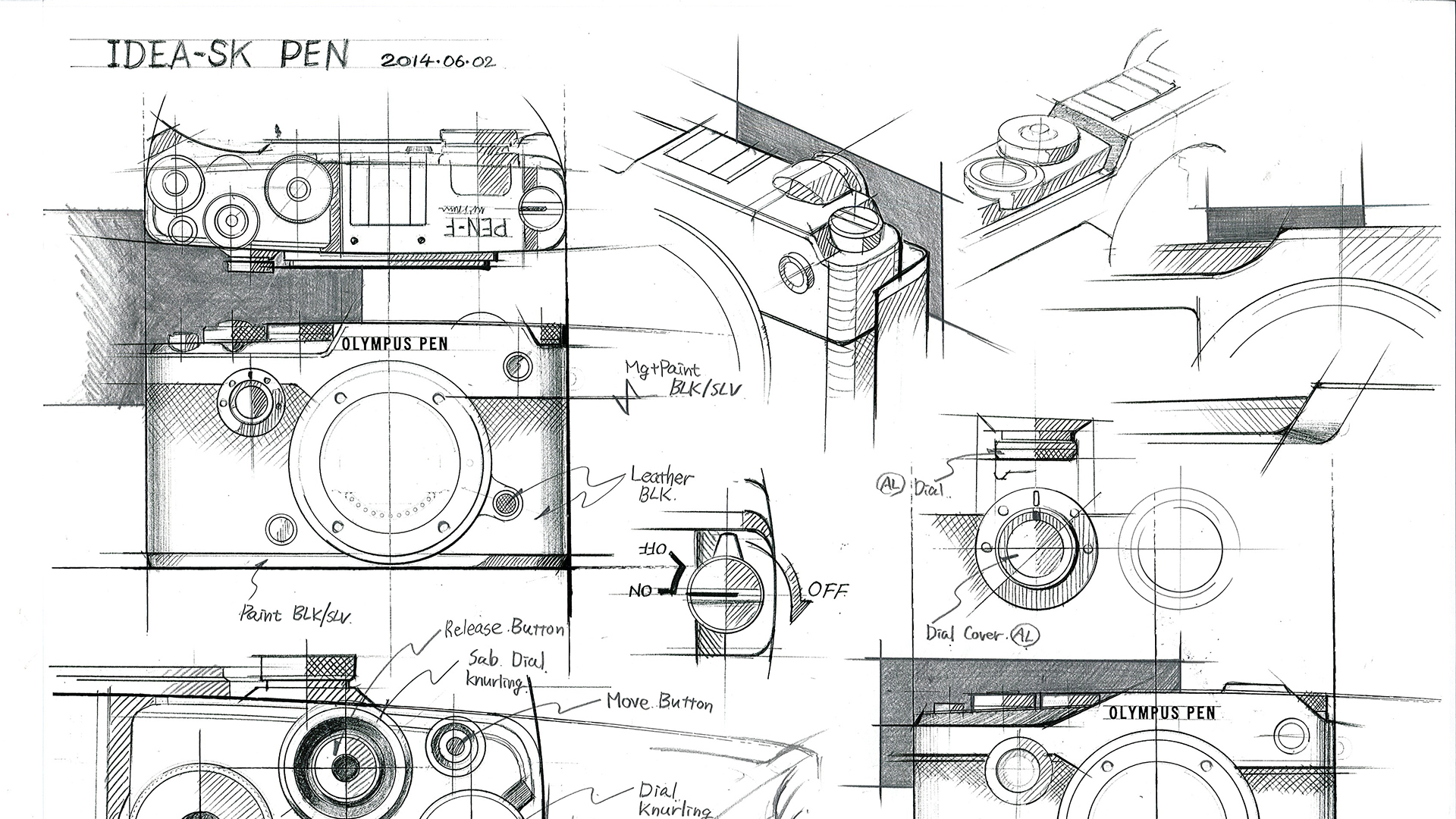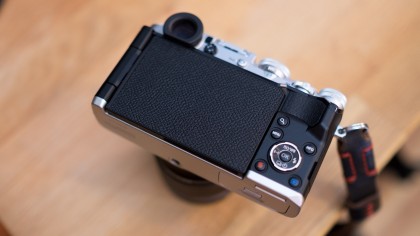Keeping the spirit of film alive in the Olympus Pen-F

Olympus has a knack for translating its rich history of analog cameras into beautiful, modern digital cameras. It's a been part of Olympus' philosophy since 2009, when the company launched its Micro Four Thirds Standard with the Pen E-P1.
The camera was introduced with a rangefinder-like design reminiscent of the company's popular half-frame Pen-F camera and came equipped with one of the industry's smallest 12-megapixel (MP) sensors at the time.
Now, five years and several cameras later, Olympus has officially introduced a digital Pen-F both in styling and name. The new rangefinder hews even more closely to the original half-frame camera by introducing the first electronic viewfinder for the Pen series and the company's first 20MP sensor. But, beyond specs, the new Pen-F is Olympus's most beautifully designed body yet.

"In the past, the Pen was highly regarded by photo enthusiasts, amateurs and professionals alike," Olympus technical specialist Eric Gensel says. "It's from that background that the original Pen-F was so popular, and we wanted that same thing for people who have that passion for photography [today]."
In the pursuit of perfection
According to Gensel, the Pen-F took three years to develop, a longer lead time than most of the company's imaging systems. In that time, the Olympus team went through several prototypes get the physical layout just right.
"They wanted to rethink the entire Pen lineup, specifically for the 80th year anniversary," he explains "There were more mockups than usual, more design and R&D work than normal."
The time and effort put into this camera shows when you hold and look at it. For one, there aren't any screws on the body. Meanwhile, the dials are positioned closely enough to keep device compact, but not so much that you'll accidentally change multiple settings at the same time.
Sign up for breaking news, reviews, opinion, top tech deals, and more.

Gensel says the Pen-F's nearly perfect ergonomics come from the camera being largely designed by hand, rather than using computer-aided design (or CAD) or 3D renderings.
"This product took an extreme amount of hands on, which I think speaks to you when you're holding it," Gensel says, noting the Olympus team made multiple mockups with wood blocks and clay. "Somebody really put a lot of time and energy into and care into this, not just what is the best for the average human hand. This was definitely an art form, as far as its creation and sculpture."

Interestingly, the Olympus Pen-F is also unique in that it has virtually no front grip, meanwhile the concave thumb grip is a first in its own right.
"Rather than having a thumb grip be an extension of the camera shell, it's specifically created for an indentation, so that my thumb can actually rest inside where the body would be to get a firmer grip," Gensel says.
Because of this layout, your thumb effectively falls into a groove while your fingers grasp the flat front plate. Most cameras come with a generous front grip to claw at, but, because of this design, you're applying almost all the pressure you need on the back plate.

Down to the last millimeter
Olympus's design team was meticulous, down to picking the right texture for its dials. At a CES 2016 briefing for the camera, I was shown a video of an Olympus engineer swapping lugs repeatedly, looking for the best setup.
"When you're holding the dials, making adjustments or interacting with the mechanical portions, you see a lot of the dials are a milled aluminum that was cut down to the proper size, shape and texture," he says.
With the Pen-F, Olympus introduces its first dedicated exposure compensation dial, a small but indispensable addition for most photographers. Gensel argues that it didn't come sooner to Olympus' other cameras, like the OM-D E-M5 Mark II and E-M10 Mark II, because it makes more sense to have assignable functions with electronically driven cameras.
"However, exposure compensation is an integral part of photography that you'll be using constantly," he continues. "You're always going to be overriding metering in some way to get the image you're envisioning. So having the added wheel makes sense."

Kevin Lee was a former computing reporter at TechRadar. Kevin is now the SEO Updates Editor at IGN based in New York. He handles all of the best of tech buying guides while also dipping his hand in the entertainment and games evergreen content. Kevin has over eight years of experience in the tech and games publications with previous bylines at Polygon, PC World, and more. Outside of work, Kevin is major movie buff of cult and bad films. He also regularly plays flight & space sim and racing games. IRL he's a fan of archery, axe throwing, and board games.